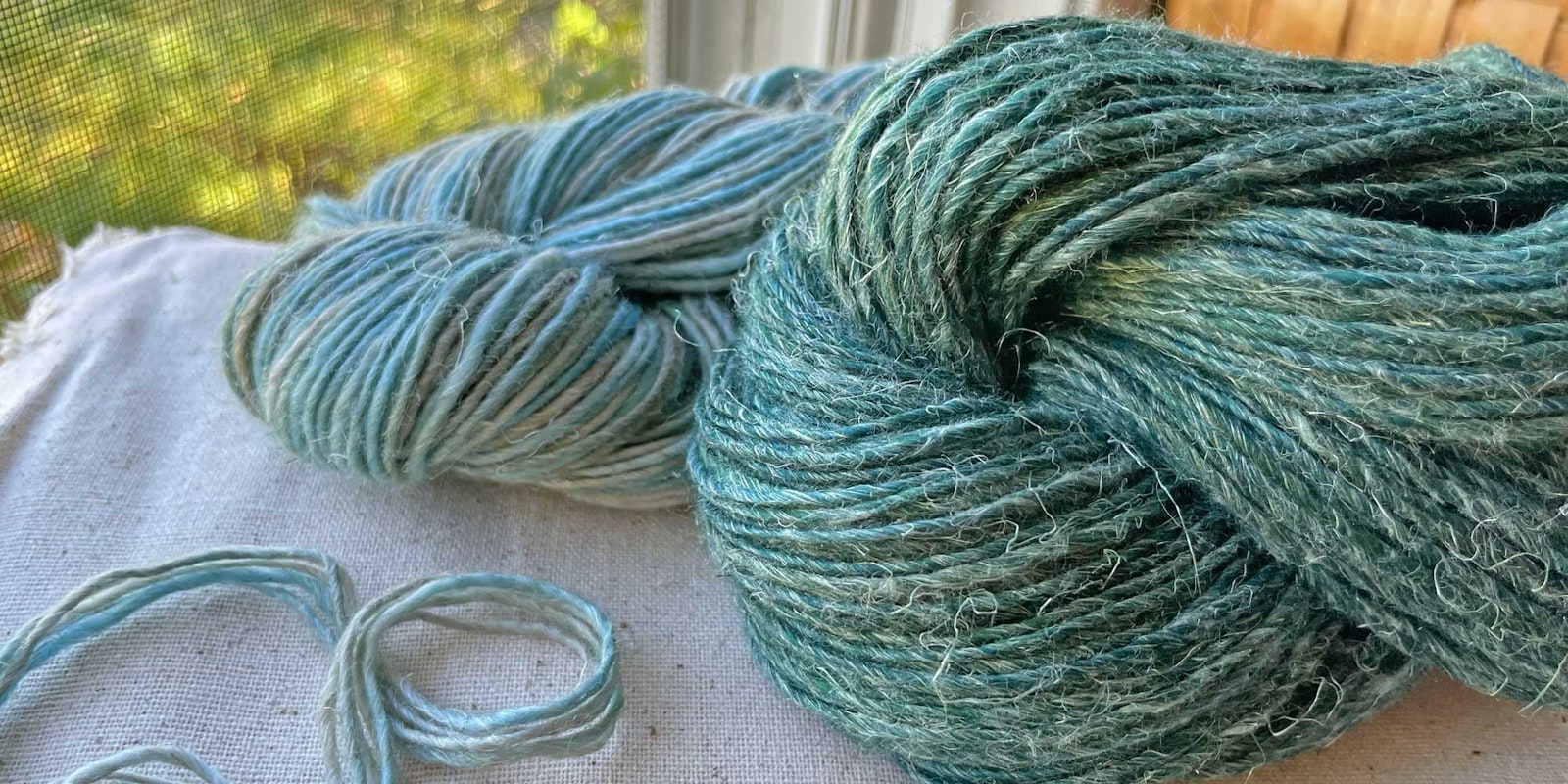Protein fibers—wool, alpaca, mohair—and cellulose fibers—cotton, linen, hemp—are opposites in many ways. Protein fibers from animals are happiest in acidic environments, while cellulose plant fibers are at ease in alkaline environs. Wool has a built-in elasticity; linen is determined to be smooth and straight. What happens when we mix them? Opposites can attract!
Taste Test: Manos del Uruguay’s Milo
I’ve worked with several wool/flax blends over the years, but I could not wait to cast on with Milo when my skeins arrived. The yarn is a soft singles with a light halo of flax. A classic singles yarn has twist added in one direction that is not “balanced” through plying. Too much twist in a singles yarn for knitting will be dense and ropy; too little twist, and that soft singles will drift apart.
I untwisted a little of the yarn and saw that the staple length of most of the fibers is quite long for a commercial yarn—about 4 inches. This means that medium twist is enough to keep the yarn strong. The fine Merino in this mix creates lofty, plump stitches, while the flax creates drape and a light surface texture that feels both a bit rustic and refined at the same time. I started with stockinette on a US 3 and then tried a couple stranded patterns on the same needle size.
 Kate tried several swatches using size US 3 needles.
Kate tried several swatches using size US 3 needles.
I also decided to see what Milo would do when lightly felted. I knitted a stockinette swatch, then held it under hand-hot water. I gave it a gentle scrub between my hands and rinsed in cold running water—that’s it! The fabric quickly firmed up. The stitch definition is still strong, as is the natural elasticity of the knitted fabric, but the surface has a velvety feel, and I know it has also increased in durability.
 Kate tried a lightly felted swatch just to see what would happen. This durable yet elastic fabric has a lovely light halo of wool and flax.
Kate tried a lightly felted swatch just to see what would happen. This durable yet elastic fabric has a lovely light halo of wool and flax.
Bast is Best?
Flax, like hemp, is a bast fiber. The term bast comes from an Old English term that refers to the fact that these fibers come from the inner bark of woody stems and trees. As the long filaments are extracted from the rest of the plant, they are refined into a silky, shiny, fiber that becomes finer and softer the more it is worked. And these fibers continue to soften as the finished textile is worn, laundered, and loved.
Because flax is heavy and smooth, it spins easily into a dense, firm thread, which is ideal for weaving and more challenging for knitting. By blending it with wool, we can add the luster, drape, and natural complexity of flax to our beloved woolen knitting yarns. Give it a try!
—Kate
Kate Larson is the editor of Spin Off magazine, teaches handspinning and knitting around the US, and spends as many hours as life allows in the barn with her beloved flock of Border Leicesters.

